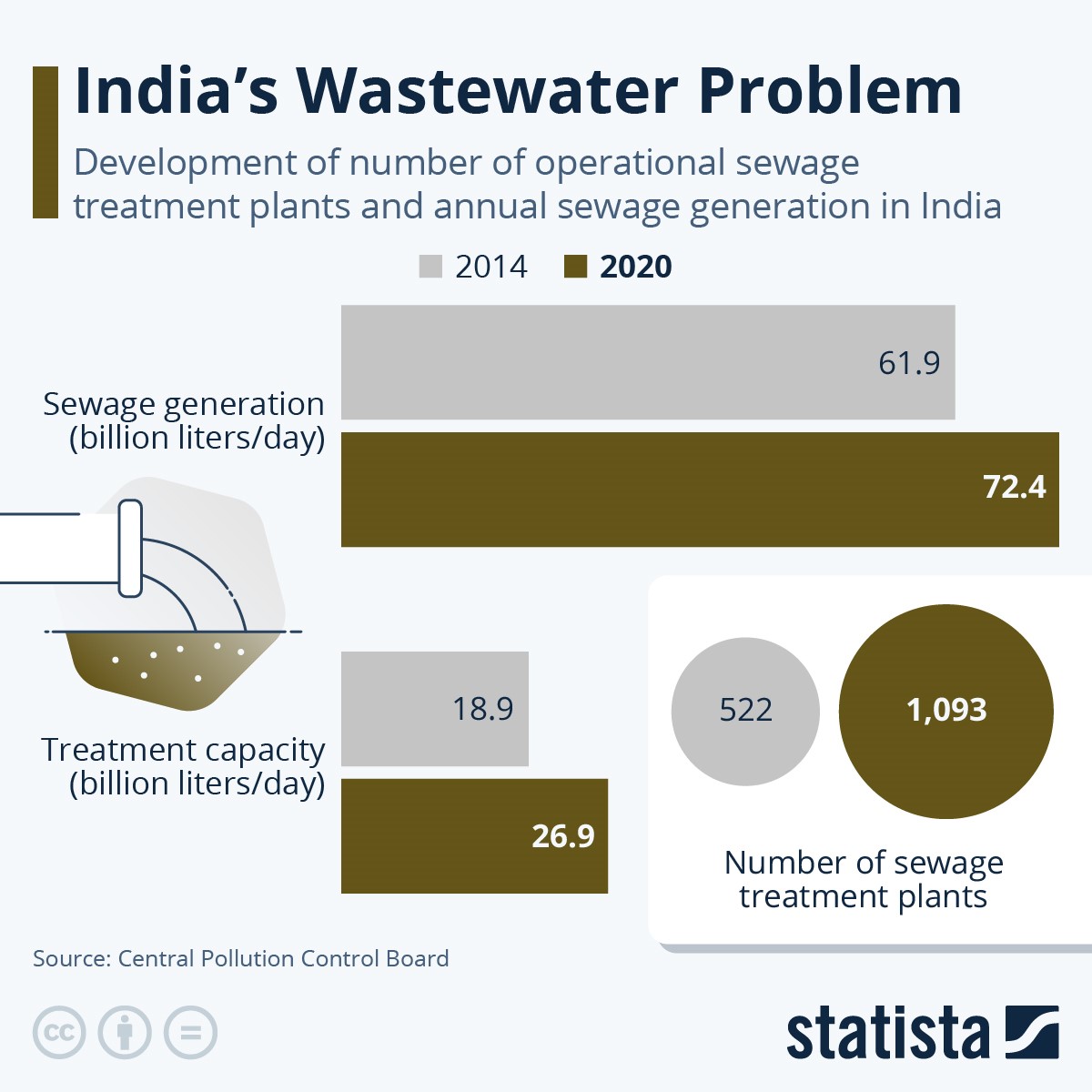Depleting freshwater sources, erratic rainfall patterns and growing water scarcity underscores the need to adapt innovative water management solutions.

India has only 4% of the world's fresh water resources despite a population of over 1.4 billion people.
National water quality standards on sewage treatment for discharge into surface water bodies are prescribed by CPCB.
Sewage generated from class I and II cities across India 6,400 million litres per day has a nutrient load of about 2,500 tonnes.
All Class I cities and Class II towns together generate an estimated 29129 MLD sewage (as per population in 2001 census) and the installed sewage treatment capacity is only 6190 MLD.
Sewage Treatment Plants Technologies
Down To Earth | India Water Use